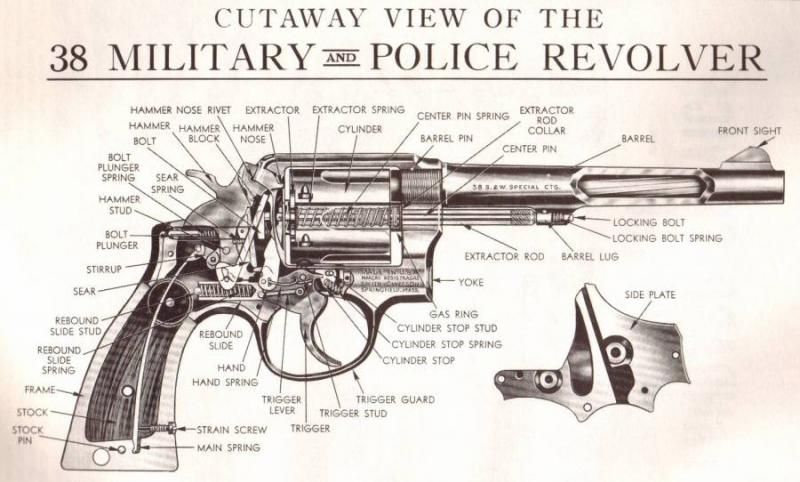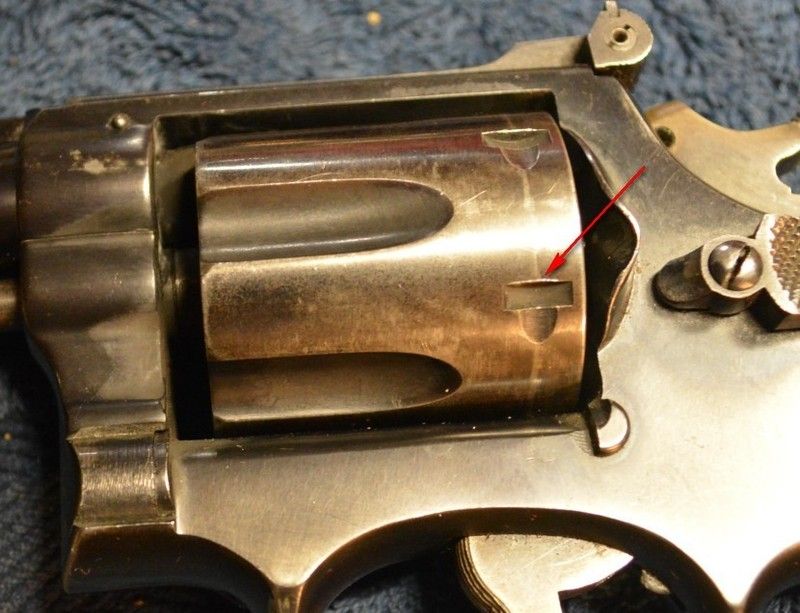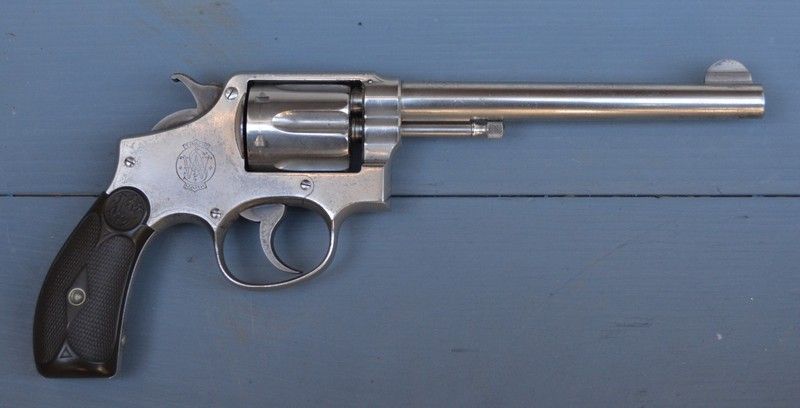Howdy
Just to be a nit picker, that Wikipedia illustration is incorrect.
Most revolver manufacturers call the part that locks the cylinder in battery the Bolt however S&W has always called it the Cylinder Stop. And the part that Wikipedia labels the trigger return slide is properly called the Rebound Slide.
Here is an official cutaway drawing from the 1940s labeling all the parts in a S&W revolver.
When the cylinder is first closed, it is normal for the cylinder to be able to be manually rotated in either direction if the gun was not closed so that the cylinder stop popped up into a locking slot on the cylinder. The hand is not extended at this time, and will not interfere with the cylinder rotating. The cylinder will be free to rotate until the cylinder stop pops up into one of its locking slots. For this reason, I have developed the habit of always pushing up with my thumb as I close the cylinder on a Smith, so the cylinder will rotate to a position to allow the cylinder stop to pop up and lock the cylinder in battery.
Once the cylinder has been put into battery, it should be locked in place, either with the hammer down or back at full cock. A few thousandths of rotation is normal because of slop of the cylinder stop in its locking slot, but other than that, the cylinder should be locked in postition.
Regarding your Model 10-6, if you open up the cylinder, the cylinder stop should pop up smartly every time you press it down and release it. It should not be sluggish. If it is sluggish, the spring might be weak, or there could be crud preventing it from moving briskly.
It is always possible that someone polished down the engagement section of the cylinder stop, so that it does not engage deep enough to lock the cylinder properly. There is less engagement on the side of the locking slot where the tear drop shaped lead in is, so it is always possible that someone over polished the cylinder stop and it is no longer engaging the slot properly.
A raised burr along the deeper side of the slot is fairly common on revolvers that have seen a lot of rapid fire double action shooting over the years. This is caused by the cylinder stop repeatedly stopping the rapid rotation of the cylinder in rapid double action shooting. However this should not affect the function of the revolver.
Other than these things, it is difficult to determine what might be causing a cylinder to rotate when it shouldn't without first hand examination of the gun.



